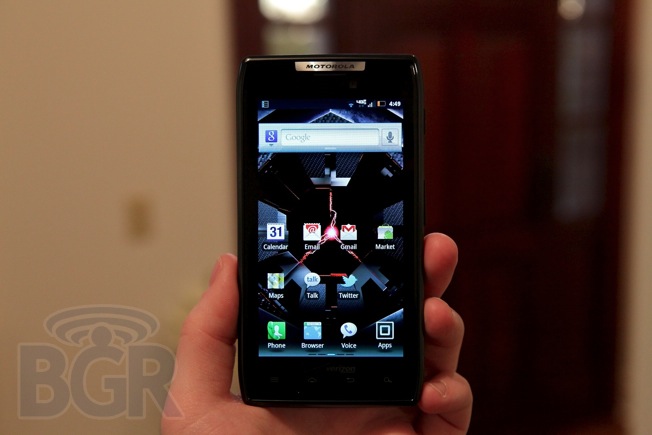Motorola DROID RAZR Review
The Motorola DROID RAZR is arguably the most exciting Android device to come across my desk in some time, but all the hype in the world doesn't necessarily mean it deserves to carry the iconic RAZR name. It's a 4G LTE device that packs in a powerful processor, high resolution display, 16GB of built-in storage, 1080p HD video capture capability and plenty more. But is this Motorola's best phone since the original RAZR? I have spent the past few days with the Motorola DROID RAZR, so hit the break for my full review.
Hardware / Display / Design
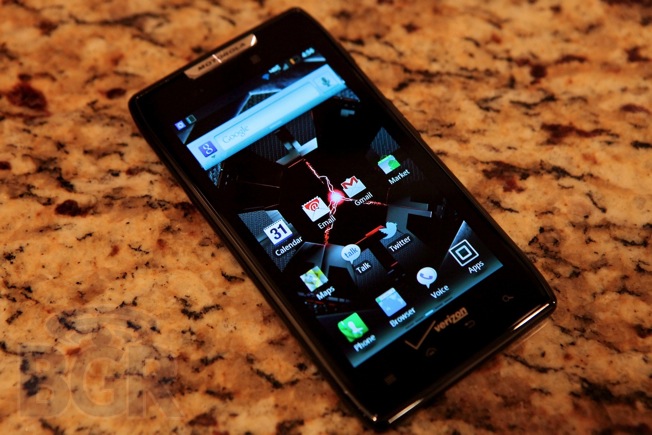
The Motorola DROID RAZR features top-of-the-line specs, and it somehow stuffs it all into one of the thinnest and lightest smartphone cases on the planet. At only 7.1 millimeters thin, this isn't only the thinnest 4G LTE device in the world, it's one of the thinnest smartphones period. With a 1.2GHz dual-core TI OMAP processor, a 4.3-inch qHD Super AMOLED display, 1GB of RAM, an 8-megapixel camera with 1080p HD video capture, an LED flash, an HDMI-out port, noise cancellation capabilities, 16GB of built-in storage and a 16GB microSD card pre-installed, this phone is isn't just competing with other Android devices, it's crushing them.
As far as the design of the handset, the DROID RAZR looks like the perfect evolution of the DROID family with a beautiful display sandwiched in between tough Gorilla Glass and a metal chassis with Kevlar backing. The edges of the RAZR are angular yet still soft, and the phone blends high gloss finishes with a matte case-back perfectly.
On top of the phone is an HDMI-out port, a microUSB charging and data port, and a 3.5-millimeter headset jack. On the right side is a power on/off/unlock button next to a volume up/down rocker key. On the left side is a small cover that flips down to give you access to the phone's LTE microSIM card and microSD card. Around back is the 8-megapixel camera, an LED flash and a speaker.
While the display on the DROID RAZR is a 4.3-inch qHD Super AMOLED screen, it still isn't perfect. It does look better to me than the displays used on the Motorola DROID BIONIC and Motorola DROID 3, but it's still a PenTile display, and that means that it still has a grainy look no matter how high the resolution is. Colors look very good and are reasonably bright and vivid, though the screen doesn't compare to the likes of Samsung's Super AMOLED Plus displays. Touch sensitivity was excellent and incredibly responsive, with the device instantly reacting to every touch event, swipe and drag. On top of the display is Gorilla Glass, so in addition to the phone performing extremely well in the display department, it should be able to hold up to your use and abuse pretty well.
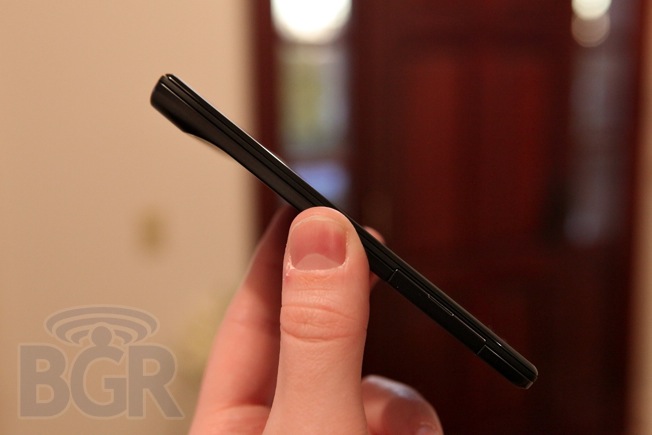
Now, while I love most of the hardware on the Motorola DROID RAZR, there are bound to be some negatives, right?
The smartphone is incredibly thin, but all that technology has to be stuffed in there somehow. How did Motorola fit it all, you ask? This phone incredibly thin but it's also extremely wide. In addition to a 4.3-inch display, on the upper end of the comfortable spectrum as far as normal non-ape humans are concerned, the RAZR has a lot of empty space on both sides of the screen. That doesn't count the phone's actual frame either.
Without measuring, it looks like there's almost a half inch of space on both sides of the display. This might not sound like a lot, but piled on top of an already huge screen, this makes one-handed use nearly impossible. I can't even delete an icon off the home screen using one hand since Motorola made the delete area at the top of the display.
When going into the phone app, I can't even dial a phone number with one hand since the dialer tab is, again, on top of the display and my thumb can't come close to reaching it. Want to browse the Web? Well, you can't do it one-handed because your thumb won't be able to touch the URL entry bar. I can't even swipe down to bring up the notification drawer using one hand to check unread messages, alerts and other information.
Software
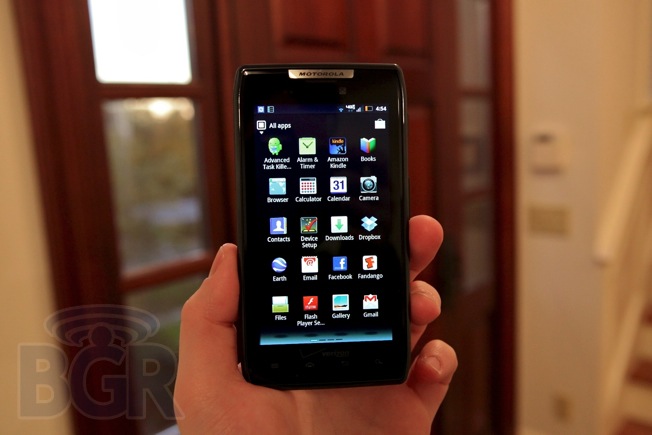
The software running on the Motorola DROID RAZR is almost identical to the last flagship Android device from Verizon Wireless that shipped only seven weeks ago, the Motorola DROID BIONIC. One new feature that is actually very handy is Motorola's Smart Actions app.
Smart Actions lets you specify different actions for your phone to automatically perform based on locations. I wish my iPhone had this. For instance, I don't use Bluetooth at all when I'm at home, and I'd love it if my iPhone would turn Bluetooth off to save battery whenever I pulled into the driveway. Well, this works flawlessly on the Motorola DROID RAZR with Smart Actions. In addition to being able to set a wide range of different settings for locations, you can also base these actions on other parameters, like when the phone reaches a certain battery percentage. One of the suggested configurations is to have your display dim, turn off GPS, and turn of background syncing when your phone's battery is at 20% or lower. Motorola says that with Smart Actions configured, you can extend your RAZR's battery by up to 30%.
Besides Smart Actions, the DROID RAZR offers FIPS 140-2 validation for email, contacts and calendar giving the RAZR government-grade encryption for those apps in addition to voice and video conferencing. Beyond these few things, the OS and UI on the Motorola DROID RAZR are basically identical to the device before it, and the one before that.
Phone / Speakerphone
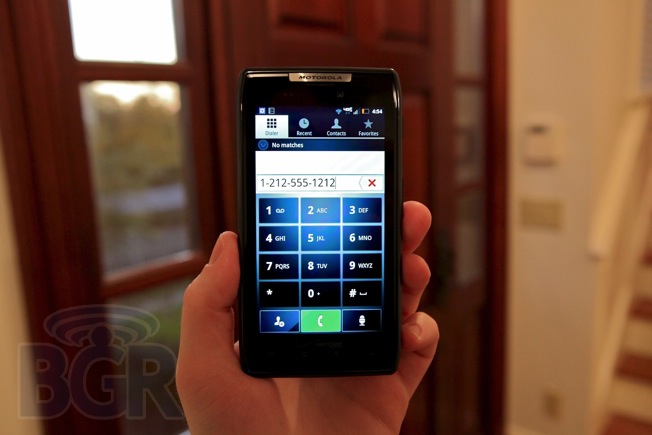
Voice calling on this phone is excellent, with calls coming through loud with good low end and clarity. Signal reception was also excellent and I almost always got 4G LTE signal in my home or around town in New York City and parts of Connecticut. Callers could hear me loud and clear.

As far as the speakerphone performance, it was sometimes hard to hear the other party in a conversation. Audio was choppy and I wish the speaker could get louder. Music playback on the speaker was hollow, tinny and distorted, but oddly, it seemed to get louder than it could during a voice call.
All in all, the DROID RAZR is a solid phone for voice calling, though the speakerphone performance fell short.
Battery
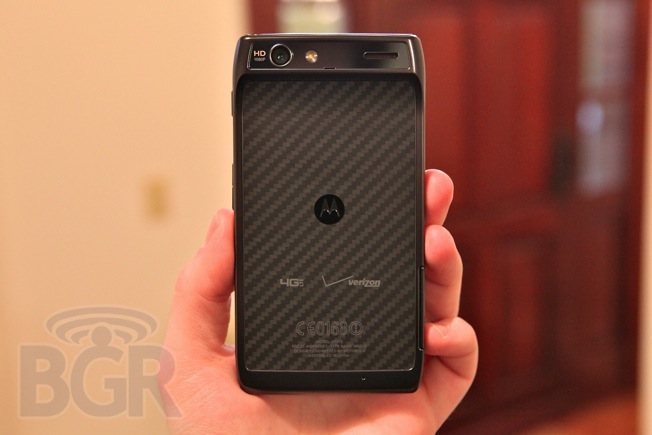
The battery on the Motorola DROID RAZR has really impressed me. After using the phone for a few days, I completely forgot about the fact that this a 4G LTE device (in terms of battery performance, not data speeds). For the first time ever, I believe that Verizon's 4G LTE devices have finally reached the point of being powerful enough in the battery department, and thin enough, to not offer any drawbacks related to 4G compatibility.
The RAZR lasted days as far as standby time is concerned, and even with moderate use, the phone went for almost two days. While the battery isn't removable, that's a small price to pay for a device that's able to run with the best of them.
Accessories
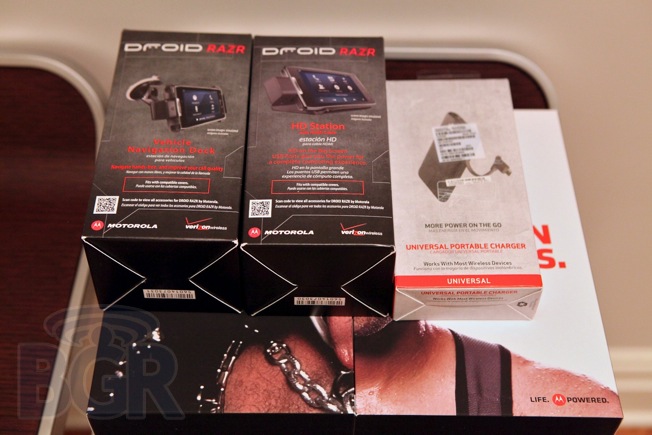
Motorola sent me a boatload of accessories for the DROID RAZR including an external battery (just plug it in and you have an external power supply), a car dock, a multimedia dock and the company's updated Lapdock 100. The new laptop dock improves upon the original, though it still has issues. For example, Motorola has wisely allowed this new Lapdock to work with a wide variety of Motorola smartphones by having a universal connector that plugs into more than one device. Unfortunately, this design doesn't actually let you dock the phone. Instead, you can only rest the phone in a cut out in the Lapdock.
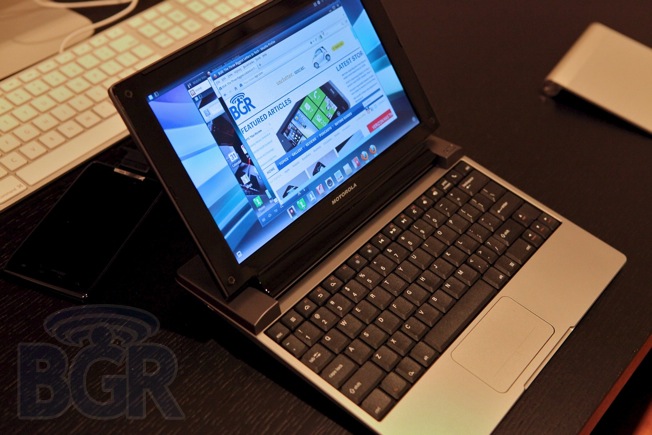
For a phone like the RAZR with the ports on the top of the case, you can't even rest the handset in the Lapdock, so you're forced to leave it plugged in on the table.
The new laptop dock has two-finger scrolling, a welcome change, though its performance it still pretty terrible and it makes navigation a maddening experience. The keyboard is improved, though key layout and size isn't optimal, either.
All in all, in my limited usage, Motorola's webtop concept is still very much a concept and not something I'd ever consider using regularly. It's easier to just use the phone itself than the clunky laptop-like accessory.
Conclusion
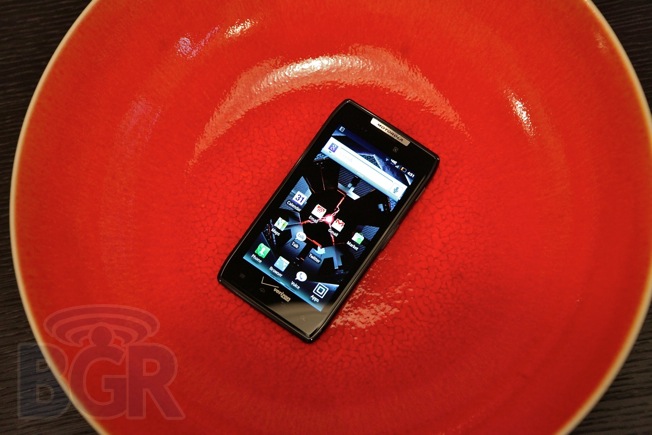
The Motorola DROID RAZR has replaced Samsung's Galaxy S II as the best Android device I've ever used. It's ridiculously fast, incredibly thin and it runs on the fastest network in the country. It is also the first 4G device to finally show the world that it doesn't have to be as thick as a brick or have battery life that forces you to invest in 12 chargers.
With a beautiful design, an amazing display and a thin profile that's packed to the brim with the latest and greatest specs, the Motorola DROID RAZR is absolutely worthy of being Verizon's flagship device for the holidays. While the physical size of the device is larger than I'd have liked, and one-handed usage can be tricky if you're not used to the crop of large display'd devices of late, there are way more positives than negatives with the DROID RAZR.
Is it a device worthy of being the new Motorola RAZR? For the most part, I'd say so.
The Motorola DROID RAZR will become available on November 11th at 11:11 a.m. for $299.99 on contract. Verizon is also offering a limited time promotion as far as 4G smartphone data plans are concerned, so a customer who signs up for the 2GB monthly plan for $30 will receive the 4GB data plan, and someone who wants something smaller will be able to add a 300MB data plan to any Verizon Wireless phone for $20 a month.
